Aboriginal
How to Native American Dance
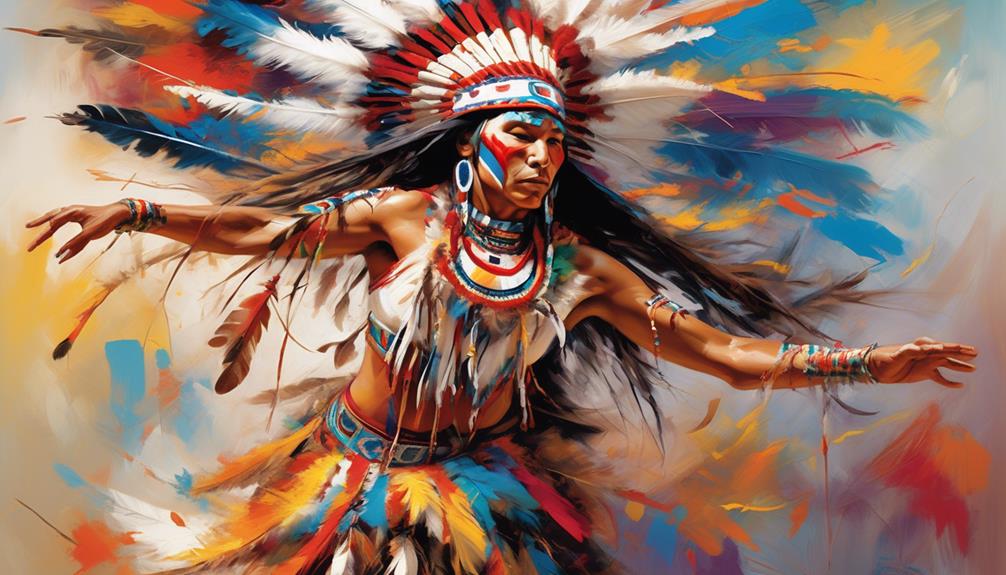
Regarding Native American dance, many might not realize the breadth and variety encapsulated in its traditions and styles. The complex steps and colorful attire represent a profound aspect of this cultural expression that extends well beyond its visual appeal.
Whether you're a newcomer or have some experience in dance, there's always more to learn and appreciate about the cultural significance and history behind Native American dance.
So, if you're ready to uncover the beauty and complexity of this art form, let's explore the world of Native American dance together.
Key Takeaways
- Cultural etiquette and respect for traditions and elders are crucial in Native American dance.
- Traditional regalia and attire, crafted with skill and artistry, hold cultural symbolism and represent tribal heritage.
- Rhythmic footwork and movements in Native American dance carry the stories, history, and spirit of the Native American people.
- Different styles of Native American dance reflect the traditions, values, and unique footwork of different tribes.
Understanding the Cultural Significance
Understanding the cultural significance of Native American dance requires delving into the rich tapestry of traditions, values, and beliefs that have shaped and continue to influence these vibrant and meaningful expressions.
Cultural etiquette is central to Native American dance, with specific protocols governing participation and behavior. These protocols serve as a means of honoring the traditions and maintaining the integrity of the dance. Respect for the elders and the knowledge they impart is crucial, as they're the bearers of wisdom and the custodians of sacred dances.
Spiritual connections are woven into the fabric of Native American dance, with movements often symbolizing elements of nature, animals, and ancestral spirits. The dance isn't merely a physical expression but a spiritual journey, a way of connecting with the divine and the natural world. Understanding the spiritual significance of each movement and gesture is essential to appreciating the depth of meaning within Native American dance.
Through these expressions, the community honors its past, celebrates its present, and connects with the spiritual essence of its existence.
Exploring Traditional Regalia and Attire
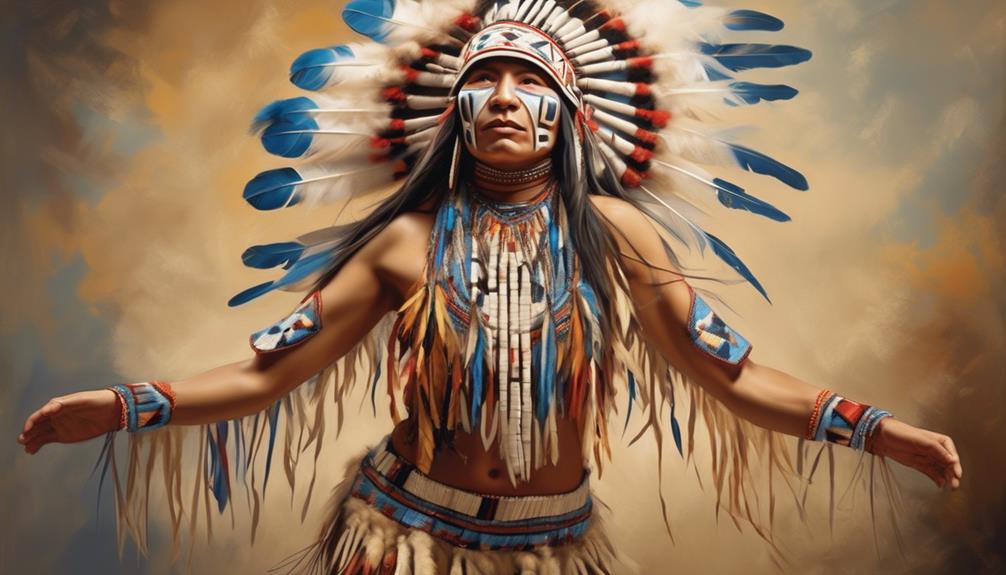
Frequently, traditional regalia and attire worn during Native American dances embody centuries-old customs and hold profound cultural significance. The regalia craftsmanship reflects the artistry and skill of Native American artisans, often incorporating intricate beadwork, quillwork, and traditional materials such as leather, feathers, and fur. The traditional dance attire varies among different tribes, with each having distinct styles and designs that are passed down through generations.
- Cultural Symbolism
The regalia and attire worn during Native American dances are rich in cultural symbolism, representing the connection to nature, the spirits, and tribal heritage. For example, the choice of colors, animal motifs, and patterns often conveys specific meanings and stories that are deeply rooted in tribal traditions.
- Rhythmic Footwork Techniques
The design and construction of traditional regalia and attire are intricately tied to the rhythmic footwork techniques employed during Native American dances. The materials and embellishments are chosen to enhance movement and create a mesmerizing visual display, harmonizing with the dancers' movements and the beat of the drum.
This cultural perspective delves into the significance of regalia craftsmanship, the diversity of traditional dance attire, the cultural symbolism embodied in the attire, and its connection to rhythmic footwork techniques.
Mastering Rhythmic Footwork and Movements
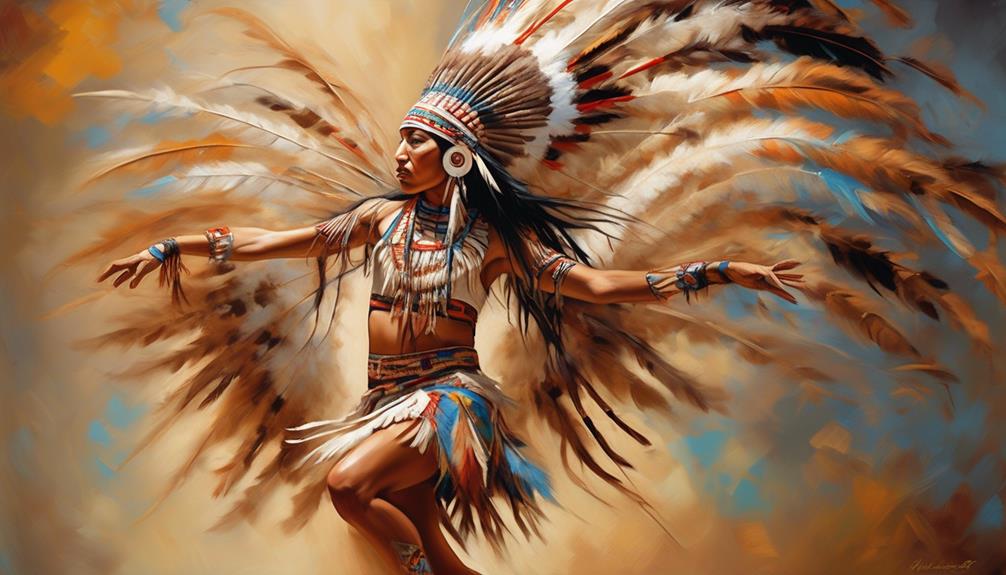
Mastering the rhythmic footwork and movements in Native American dances demands a deep understanding of the cultural significance and a dedicated commitment to embodying the traditions passed down through generations. Dance techniques and cultural traditions are intricately woven into the fabric of Native American dance, making it essential to approach footwork mastery with the utmost respect and diligence. Authentic movements are not just steps; they carry the stories, history, and spirit of the Native American people.
| Dance Technique | Cultural Significance | Footwork Mastery |
|---|---|---|
| Balanced Stance | Connection to the Earth | Precision and Grace |
| Flowing Transitions | Symbolism of Nature | Fluidity and Control |
| Expressive Gestures | Storytelling Tradition | Emotion and Intention |
| Grounded Movements | Ancestral Respect | Strength and Agility |
To master the rhythmic footwork and movements in Native American dances, one must immerse themselves in the cultural significance of each step, transition, and gesture. Every movement tells a story and embodies the rich history and traditions of the Native American people. By embracing the dance techniques and cultural traditions with reverence, individuals seeking mastery can honor and preserve the authenticity of Native American dance.
Embracing Different Styles of Native American Dance
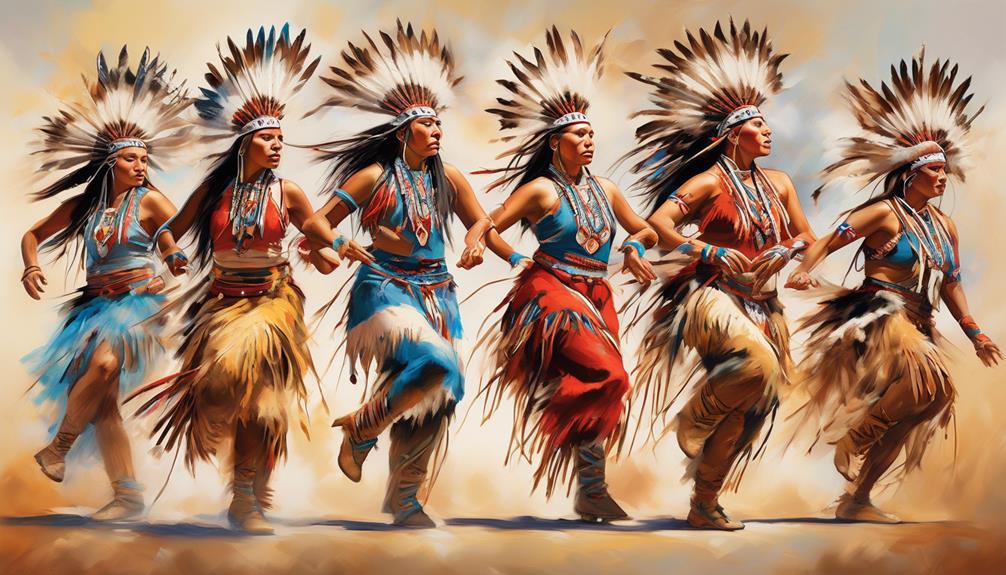
Embracing the diverse styles of Native American dance is an enriching journey that immerses us in the vibrant tapestry of indigenous cultural expressions. As we delve into the realm of Native American dance, we encounter a rich array of styles that reflect the diversity of tribal traditions and histories. In this exploration, we come to appreciate the profound significance of cultural appreciation and the nuances of various dance techniques.
- Cultural Appreciation
Understanding the historical and cultural context of each dance style fosters a deep appreciation for the traditions and values of different Native American tribes. Engaging with the stories and symbolism embedded in the movements allows for a meaningful connection to the spiritual and ceremonial aspects of the dances.
- Dance Techniques
Mastering the unique footwork, body movements, and gestures specific to each dance style requires dedication and attentiveness to detail. Exploring the distinct rhythms, tempos, and musical accompaniment associated with different dance styles enhances our understanding of the interconnectedness between music and movement in Native American traditions.
Honoring the History and Heritage of Native American Dance
As we explore the diverse styles of Native American dance and the profound significance of cultural appreciation, it becomes imperative to honor the history and heritage that underpin these captivating expressions.
Traditional rituals hold a sacred place in the hearts of Native American communities, and the dance serves as a medium to convey their stories, beliefs, and emotions. It's crucial to recognize the spiritual connection and communal celebration embedded in Native American dance, as it reflects the deep-rooted traditions passed down through generations.
Furthermore, acknowledging the modern adaptations of these dances is essential in understanding how they've evolved while retaining their cultural essence.
The history and heritage of Native American dance are intertwined with the very fabric of their identity, making it essential to approach these art forms with respect and understanding. Through extensive field research, it's evident that these dances aren't merely performances but rather a manifestation of the collective experiences and values of indigenous peoples.
Mastery in honoring the history and heritage of Native American dance lies in delving beyond the movements and costumes, and embracing the profound significance of these cultural expressions.
Frequently Asked Questions
What Are Some Common Misconceptions About Native American Dance and How Can They Be Addressed?
Common misconceptions about Native American dance include stereotypical portrayals as primitive or monolithic. These can be addressed through cultural understanding and respectful engagement with Native communities.
Authentic representation involves recognizing the diversity and complexity of Native dance traditions. Misconceptions can be dispelled through education and promoting accurate portrayals.
Are There Specific Rituals or Ceremonies That Are Often Associated With Native American Dance?
Ceremonial significance is a vital aspect of Native American dance, with specific rituals and ceremonies often associated with it.
Traditional attire holds deep cultural and spiritual meaning, embodying the essence of the dance.
Respecting these traditions is crucial to avoid cultural appropriation.
Understanding the ceremonial significance and the cultural context of the attire is essential in honoring and preserving the authenticity of Native American dance.
How Does One Respectfully Participate in or Observe a Traditional Native American Dance?
Respectful participation in traditional Native American dance requires cultural sensitivity. Observing proper etiquette and understanding the significance of dance attire and symbolism is crucial.
It's essential to approach participation with an open mind and willingness to learn from the community. Engaging with humility and respect for the cultural traditions is key.
What Are Some Ways to Support and Preserve the Traditions of Native American Dance Within the Community?
Community involvement is essential for supporting and preserving Native American dance traditions. By actively participating in cultural events and ceremonies, we can demonstrate our respect and appreciation for these traditions.
Additionally, cultural education programs can be organized to teach the history and significance of Native American dance within the community. These efforts help to ensure that these traditions continue to thrive and are passed down to future generations.
Are There Specific Etiquette or Protocols to Follow When Attending a Native American Dance Performance or Event?
When attending a Native American dance performance or event, it's crucial to observe proper etiquette and demonstrate cultural understanding.
This includes respecting sacred items, refraining from photography without permission, and refraining from interrupting the dancers.
Understanding the significance of the event and showing appreciation for the traditions being shared is essential.
Conclusion
In conclusion, Native American dance is a vibrant and rich tradition that holds deep cultural significance.
By exploring the traditional regalia, mastering rhythmic footwork, and embracing different styles, we can honor the history and heritage of Native American dance.
The rhythmic movements and vibrant colors create a powerful and captivating display that reflects the resilience and spirit of Indigenous peoples.
It's a celebration of identity, history, and tradition that continues to thrive in modern times.
Mary is a passionate writer who brings creativity and a fresh perspective to our team. Her words have the power to captivate and inspire, making her an essential contributor to our content. Mary’s commitment to storytelling and dedication to promoting Indigenous culture ensures that her work touches the hearts of our readers. We’re fortunate to have her as part of our team.
Aboriginal
Aboard at a Ship's Helm Meaning

When the words ‘aboard at a ship’s helm’ reach your ears, you may envision yourself at the controls of a formidable ship, navigating it across the capricious seas.
But what does this expression truly signify, and how has it transcended its nautical origins to become a metaphor for leadership and control?
As you ponder the layers of meaning behind this timeless phrase, you'll come to understand its historical significance, symbolic implications, and relevance in modern contexts.
But first, let's set sail on a journey to uncover the intriguing origins and multifaceted interpretations of being 'aboard at a ship's helm.'
Key Takeaways
- The phrase 'aboard at a ship's helm' originated from early seafaring traditions and represents leadership and authority.
- It symbolizes control, leadership, and navigating through life's challenges.
- The phrase has evolved to encompass a broader cultural significance and is used in literature and art to convey empowerment and determination.
- It continues to resonate with individuals seeking inner strength and resilience.
Historical Origins
The historical origins of the phrase 'aboard at a ship's helm' can be traced back to the early days of seafaring, where the concept of being 'aboard' a vessel and taking control of its 'helm' held significant practical and symbolic importance.
In exploring maritime traditions, it becomes evident that the helm, the ship's steering mechanism, was crucial for naval navigation, and the individual 'aboard at the helm' was responsible for guiding the vessel safely through often treacherous waters. This responsibility wasn't only a matter of skill but also carried immense symbolic weight, as it signified the trust and confidence placed in the person at the helm.
The historical context reveals that naval navigation demanded not only technical expertise but also a deep understanding of the sea, weather patterns, and celestial navigation. Consequently, being 'aboard at a ship's helm' was a position of great honor and authority, reflecting the mastery of both practical and theoretical aspects of seafaring.
Therefore, the phrase embodies a rich tapestry of maritime traditions, highlighting the pivotal role of naval navigation in the annals of history.
Nautical Meaning

Emerging from its historical origins deeply embedded in maritime traditions, the nautical meaning of 'aboard at a ship's helm' encompasses a profound legacy of honor, authority, and mastery in naval navigation.
Nautical traditions dictate that the helm of a ship represents the very essence of maritime leadership. It symbolizes the pivotal role of a captain or officer in steering the vessel, making crucial navigational decisions, and ultimately ensuring the safety and success of the voyage.
At the core of this nautical meaning lies the concept of honor. Taking the helm is a position of great responsibility, requiring not only skill and expertise but also a deep sense of duty and respect for the sea. It embodies the trust placed in the leader to guide the ship through unpredictable waters, embodying the highest standards of maritime leadership.
Furthermore, the nautical meaning of 'aboard at a ship's helm' underscores the authority vested in the individual at the helm. This authority isn't merely about giving commands but also about making informed judgments, taking into account the ship's capabilities, the prevailing conditions, and the overall strategic objectives of the voyage.
In essence, it represents the pinnacle of mastery in naval navigation, where the individual at the helm must demonstrate unparalleled expertise and decisiveness.
Symbolism and Interpretations
Navigating through the depths of maritime symbolism and interpretations, the concept of 'aboard at a ship's helm' unveils layers of significance and cultural connotations deeply ingrained in naval history. The metaphorical significance and literary analysis of this phrase provide a rich tapestry of interpretations.
- Literary Analysis: The phrase 'aboard at a ship's helm' has been a recurring motif in literary works. It often symbolizes taking control, leadership, and the ability to guide the course of one's life. In literature, it has been used to depict characters who possess determination, resilience, and a sense of purpose in navigating through life's challenges.
- Metaphorical Significance: This phrase holds a metaphorical significance beyond its literal meaning. It represents empowerment, responsibility, and the capability to steer through turbulent waters. Its metaphorical depth extends to symbolize the human capacity to take charge of one's destiny and make crucial decisions amidst adversity.
- Cultural Significance and Artistic Interpretations: In art and culture, 'aboard at a ship's helm' has been depicted in paintings, sculptures, and other artistic forms as a symbol of courage, self-determination, and the pursuit of one's aspirations.
The rich tapestry of interpretations and cultural representations associated with 'aboard at a ship's helm' underscores its enduring significance in the realm of symbolism and artistic expression.
Modern Usage

Modern sailors and maritime enthusiasts frequently employ the phrase 'aboard at a ship's helm' to symbolize taking charge of their lives and steering through the complexities of contemporary challenges. This expression has evolved to encompass a broader cultural significance, reflecting the timeless human desire for autonomy and mastery in navigating the tumultuous seas of existence.
The linguistic evolution of this maritime metaphor showcases its enduring relevance, transcending its original literal context to become a symbol of personal agency and leadership in the face of modern-day adversities.
In contemporary usage, 'aboard at a ship's helm' is often employed in literary references to convey a sense of empowerment and determination. It serves as a poignant reminder of the individual's capacity to chart their own course amidst the ebb and flow of life's circumstances.
This phrase has thus acquired a renewed significance in the modern lexicon, resonating with individuals across diverse backgrounds who seek to harness their inner strength and resilience. Its enduring appeal lies in its ability to encapsulate the timeless human aspiration for self-determination, making it a compelling motif in both literature and everyday discourse.
Famous Examples
The evolution of the phrase 'aboard at a ship's helm' in modern usage reflects a broader cultural significance, and this is exemplified through various famous examples that illustrate its enduring relevance in literature and everyday discourse.
Literary references containing this phrase abound, showcasing its deep integration into the cultural fabric. For instance, Herman Melville's classic novel 'Moby-Dick' uses this expression to symbolize the control and responsibility one holds in guiding their own destiny.
Similarly, in Joseph Conrad's 'Lord Jim,' the protagonist's journey is likened to being 'aboard at a ship's helm', highlighting the theme of personal agency in steering one's course through life's tumultuous waters.
Moreover, the works of William Shakespeare, particularly in 'Julius Caesar' and 'Antony and Cleopatra,' employ this phrase to convey the weight of leadership and the power of individual decision-making.
These literary references not only showcase the enduring nature of the phrase but also underscore its cultural significance in portraying human agency, responsibility, and the navigation of life's complexities.
Frequently Asked Questions
What Are the Different Types of Ships' Helms That Have Been Used Throughout History?
Throughout history, various types of ship's helms have been used, each reflecting the evolution of maritime technology. The types of helms include the tiller, whipstaff, and various wheel designs.
The evolution of helms has seen advancements in steering mechanisms, from manual tillers to more modern wheel-based systems.
Understanding the different types of helms provides insight into the development of naval navigation and the technological advancements that have shaped seafaring.
Are There Any Specific Rituals or Traditions Associated With Taking the Helm of a Ship?
Taking the helm of a ship involves specific rituals and traditional practices that hold deep cultural significance.
Before assuming command, sailors often participate in ceremonies to ensure safe passage. These rituals vary across different maritime cultures, but they all emphasize the responsibility and honor associated with steering a vessel.
Understanding and respecting these customs is essential for mastering the art of sailing and fostering a deep connection to maritime traditions.
How Has the Role of the Ship's Helm Changed With Advancements in Technology and Navigation?
With the impact of GPS technology and automation in navigation, the role of the ship's helm has evolved significantly. Traditional celestial navigation methods have been largely replaced by modern techniques, allowing for more precise and efficient control of the vessel.
The reliance on technology has reduced the need for manual steering, shifting the focus to supervisory roles. Advancements in navigation have made the helm's role more about strategic decision-making and oversight rather than manual operation.
Are There Any Common Misconceptions About the Meaning of Being "Aboard at a Ship's Helm"?
You might think that being 'aboard at a ship's helm' is all about control and power, but common misconceptions often overlook the historical significance.
The evolving role of the ship's helm, from navigating treacherous waters to guiding through modern technology, has its own ironies.
Despite advancements, famous disasters remind us that the helm still holds immense responsibility.
Understanding the true meaning of being 'aboard at a ship's helm' requires delving beyond the surface.
Are There Any Famous Maritime Disasters or Incidents Related to the Ship's Helm?
Famous maritime disasters often involve the ship's helm, a critical element in navigation. In literature, the ship's helm symbolizes control and direction, such as in 'Moby-Dick' where Captain Ahab's obsession leads to disaster.
The Titanic's tragic fate, in part due to a misjudged helm maneuver, is another well-known example. Understanding these incidents highlights the pivotal role of the ship's helm and the consequences of errors in navigation.
Conclusion
As the ship's helm symbolizes control and direction, it serves as a metaphor for leadership and decision-making in various contexts.
Just as a skilled captain navigates the ship through stormy seas, individuals must steer their lives with determination and wisdom.
The helm represents the power to chart one's own course and overcome obstacles, making it a timeless and powerful symbol of resilience and determination.
Talise is a talented writer and an expert in her field. Her unique perspective and insights enrich our content with depth and authenticity. With a wealth of knowledge and a strong connection to the subjects she writes about, Talise crafts engaging and informative articles that resonate with our readers. Her dedication to bringing Indigenous culture and wisdom to light is truly commendable.
Aboriginal
What Ethnicity Are Aboriginal Australians
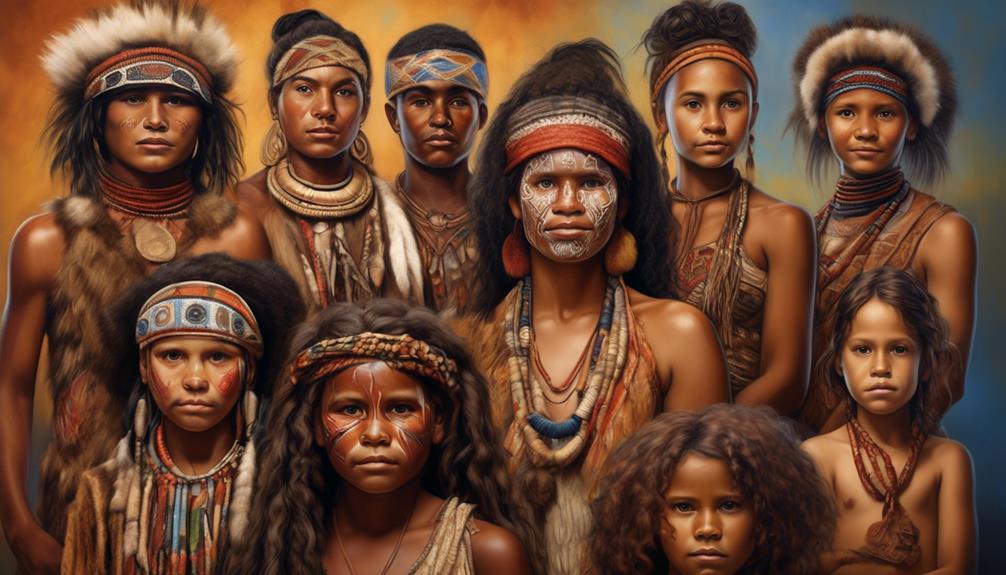
It’s fascinating how frequently the topic of the ethnic background of Aboriginal Australians arises in conversations. Their roots and ethnic identity entail complexities that cannot be encapsulated by a straightforward response.
As we explore the genetic and anthropological studies, cultural diversity and traditions, and the impact of European colonization, we start to uncover a rich tapestry of identities and histories that make up the Aboriginal Australian ethnicity.
But what does modern ethnicity mean for them, and how is it recognized in today's society?
Key Takeaways
- Aboriginal Australians have been present in Australia for at least 65,000 years, making them one of the oldest continuous cultures on Earth.
- Aboriginal Australians have a rich cultural heritage, including deep knowledge of the environment, oral traditions, and cultural practices such as Dreamtime stories and songlines.
- European colonization had a devastating impact on Aboriginal Australians, disrupting their traditional practices, leading to social inequality, and forcibly taking away ancestral lands.
- Recognition of Aboriginal Australians' unique identity and promoting social inclusion and understanding are crucial for their well-being, with efforts focused on challenging stereotypes and advocating for equitable representation in society.
Origins of Aboriginal Australians
The origins of Aboriginal Australians can be traced back tens of thousands of years through archaeological evidence and oral histories passed down through generations.
The prehistoric migration of Aboriginal ancestors is supported by archaeological findings, such as stone tools and rock art, which indicate their presence in Australia around 65,000 years ago.
These early inhabitants demonstrated a deep understanding of their environment, utilizing sophisticated hunting and gathering techniques to thrive in diverse landscapes.
Oral traditions further enrich our understanding of their origins, providing valuable insights into their cultural practices, spiritual beliefs, and kinship systems.
Genetic and Anthropological Studies
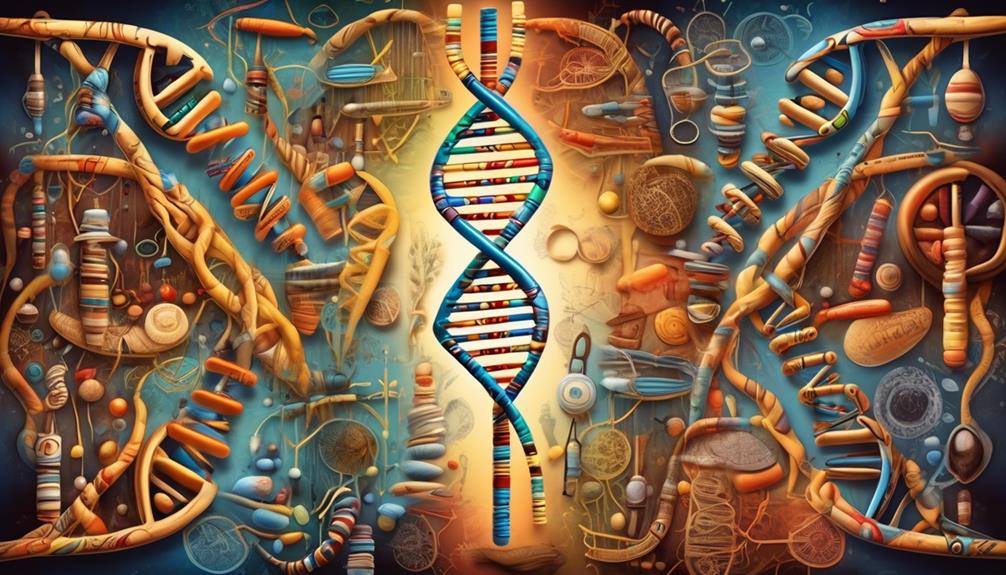
Exploring the genetic and anthropological studies sheds light on the ancestral heritage and evolutionary history of Aboriginal Australians, connecting the archaeological evidence and oral traditions to scientific research findings.
Genetic research has provided valuable insights into the deep-rooted lineage of Aboriginal Australians. Studies have revealed that they're one of the oldest continuous cultures on Earth, with genetic evidence indicating their presence in Australia for over 50,000 years. Through the analysis of mitochondrial DNA and Y-chromosome markers, researchers have traced the ancient migration patterns and population dynamics of Aboriginal Australians, unraveling the complexities of their genetic ancestry.
Anthropological findings have further enriched our understanding of Aboriginal Australian heritage. By studying cultural practices, language diversity, and material culture, anthropologists have uncovered the rich tapestry of traditions and connections that bind Aboriginal communities. These findings not only contribute to the appreciation of their cultural identity but also dispel misconceptions and stereotypes.
Moreover, anthropological studies highlight the resilience and adaptability of Aboriginal Australians in the face of historical and environmental challenges, offering valuable lessons for the broader community.
Together, genetic research and anthropological findings provide a comprehensive narrative of the diverse and enduring legacy of Aboriginal Australians.
Cultural Diversity and Traditions
Studying the cultural diversity and traditions of Aboriginal Australians reveals a rich tapestry of customs, beliefs, and practices that have endured for millennia. The cultural preservation of traditional practices is a cornerstone of Aboriginal communities, and it is essential to understand and respect these traditions in any interaction with Aboriginal Australians. Here is a glimpse into the diverse cultural traditions of Aboriginal Australians:
| Traditional Practices | Description |
|---|---|
| Dreamtime Stories | Oral storytelling of creation, land, and cultural history passed down through generations. |
| Songlines | Complex oral maps that describe the landscape, including important sites, water sources, and food locations. |
| Kinship Structures | Defines relationships, responsibilities, and obligations between individuals and groups within the community. |
| Bush Tucker | Gathering and hunting of native flora and fauna for food, often using traditional methods. |
| Art and Ceremonies | Intricate and meaningful artwork, dance, and ceremonies that hold spiritual and cultural significance.
Understanding the significance of these practices fosters respect and appreciation for the rich cultural heritage of Aboriginal Australians.
Impact of European Colonization
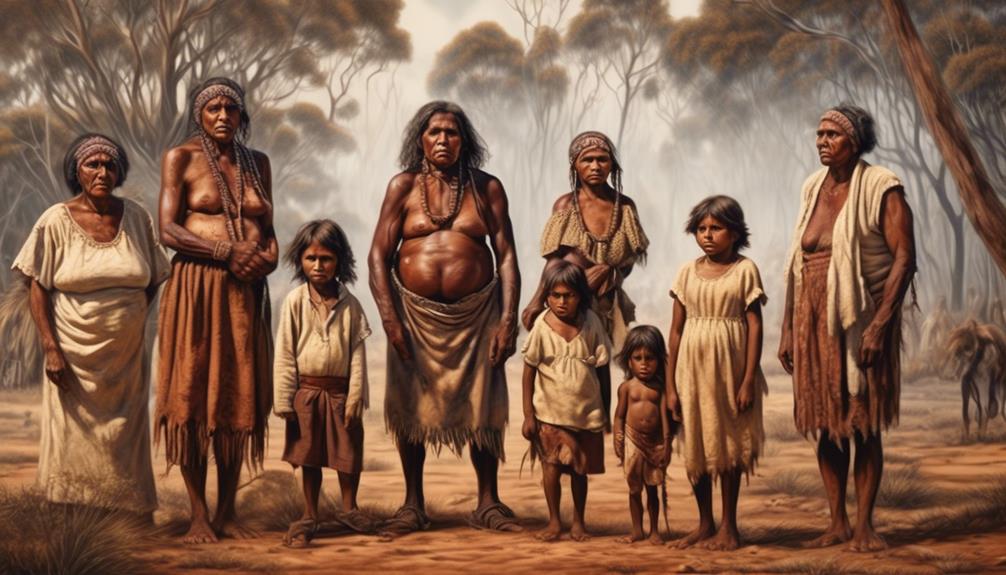
Upon the arrival of European settlers, our way of life was significantly altered, as our lands were colonized and our traditional practices were disrupted. The impact of European colonization on Aboriginal Australians has been profound, leading to enduring social inequality and land dispossession. The consequences of these historical events continue to shape our lives and communities today.
- Social Inequality
- We've faced systemic discrimination and marginalization, resulting in disparities in health, education, and employment opportunities.
- Our cultural values and knowledge systems have often been overlooked, contributing to a lack of representation and voice in decision-making processes.
- Land Dispossession
- Our ancestral lands, which hold deep spiritual and cultural significance, were forcibly taken away, severing our connection to country.
- The loss of land has impacted our ability to practice traditional customs and engage in customary subsistence activities, affecting our cultural identity and well-being.
The enduring legacy of European colonization underscores the ongoing struggles faced by Aboriginal Australians. As we strive for social justice and reconciliation, it's crucial to acknowledge the historical injustices and work towards creating a more equitable and inclusive society for all.
Modern Ethnic Identity and Recognition
The impact of European colonization continues to shape our lives and communities today, influencing our modern ethnic identity and the recognition of our cultural heritage.
As Aboriginal Australians, our modern identity is a complex and evolving concept that encompasses our traditional heritage and our experiences within contemporary society. Achieving social inclusion and recognition of our cultural identity is crucial for our community's well-being and for the preservation of our traditions for future generations.
We're working towards fostering a sense of belonging and pride in our cultural heritage, while also navigating the complexities of modern life. Our efforts are focused on promoting understanding and respect for our unique identity, advocating for equitable representation in all aspects of society, and challenging stereotypes and misconceptions.
Frequently Asked Questions
What Are Some Common Misconceptions About the Ethnicity of Aboriginal Australians?
There are many misconceptions about the ethnicity of Aboriginal Australians. These misconceptions often overlook the rich cultural preservation and contemporary impact of Aboriginal communities.
It's important to recognize that ethnicity isn't solely defined by genetic markers, but rather by a complex mix of cultural, historical, and social factors.
How Do Aboriginal Australians Maintain Their Cultural Traditions in Modern Society?
Maintaining cultural traditions in modern society is crucial for Aboriginal Australians. Cultural preservation involves adapting traditional practices to fit into modernity.
We prioritize passing down our customs and knowledge to the younger generation while also finding ways to incorporate them into contemporary life.
Through art, storytelling, and community events, we ensure that our cultural heritage remains strong and relevant, allowing us to honor our past while embracing the present.
Are There Any Specific Genetic Markers That Are Unique to Aboriginal Australians?
Genetic markers unique to Aboriginal Australians have been identified through population studies. These markers provide valuable insights into the history and diversity of this community.
It's fascinating how these markers contribute to our understanding of human migration patterns and cultural heritage. They serve as a testament to the rich and complex tapestry of Aboriginal Australian ancestry.
It's truly remarkable how genetic markers can illuminate the unique story of this ancient population.
What Role Do Aboriginal Australians Play in Contemporary Australian Society?
In contemporary Australian society, Aboriginal Australians make significant contributions through their art, music, literature, and cultural practices. They play a vital role in social integration by promoting diversity and advocating for indigenous rights.
Their contributions enrich the cultural fabric of Australia, fostering understanding and respect for indigenous heritage. By sharing their traditions and knowledge, Aboriginal Australians help create a more inclusive and equitable society for all.
How Do Aboriginal Australians View Their Relationship With the Land and the Environment?
We understand the deep spiritual connection Aboriginal Australians have with the land. This relationship influences their environmental stewardship, rooted in traditional knowledge.
For instance, the Yolngu people in Arnhem Land have actively engaged in conservation efforts to protect sacred sites and biodiversity. Their holistic approach to land management reflects a profound respect for nature, serving as an inspiring example of traditional wisdom benefiting the environment and future generations.
Conclusion
In conclusion, Aboriginal Australians are a diverse group with a rich cultural heritage.
Genetic and anthropological studies have shown that they've inhabited Australia for over 50,000 years, making them one of the oldest continuous cultures in the world.
Today, there are over 250 distinct language groups among Aboriginal Australians, highlighting the immense cultural diversity within their community.
Mary is a passionate writer who brings creativity and a fresh perspective to our team. Her words have the power to captivate and inspire, making her an essential contributor to our content. Mary’s commitment to storytelling and dedication to promoting Indigenous culture ensures that her work touches the hearts of our readers. We’re fortunate to have her as part of our team.
Aboriginal
What Island Did Aboriginal Australians Come From
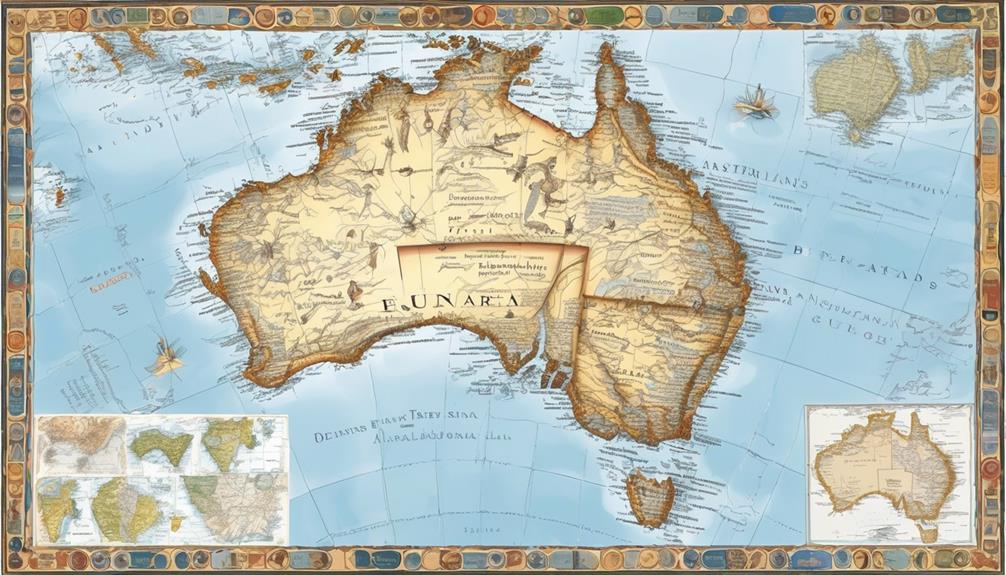
As we contemplate the beginnings of Aboriginal Australians, our minds wander to the immense spread of the sea, the steady beat of waves upon the coastline, and the far-off outline of islands against the sky.
The question of which specific island the ancestors of the Aboriginal Australians originated from is a fascinating puzzle that has captivated researchers for decades. The search for this island holds the key to understanding the ancient migration patterns of early humans and the complex web of connections that link different cultures and societies.
Join us as we unravel the clues and piece together the intricate story of the Aboriginal Australians' journey to the land down under.
Key Takeaways
- Early human migration in Southeast Asia involved complex movements and interactions, with diverse cultural practices and technological advancements.
- Genetic links between Aboriginal Australians and indigenous peoples of New Guinea suggest a shared ancestry and significant overlap in maternal lineage.
- Ancient seafarers possessed remarkable navigational skills and utilized sophisticated watercraft for island hopping, relying on understanding of ocean currents, wind patterns, and celestial navigation.
- The Torres Strait played a crucial role as a geographical bridge between Australia and New Guinea, facilitating cross-cultural exchange and shaping the identities of ancient seafaring communities.
Early Human Migration in Southeast Asia
In our examination of early human migration in Southeast Asia, we observe a complex tapestry of movements and interactions that have shaped the region's prehistoric landscape. The study of prehistoric settlements in Southeast Asia has revealed significant archaeological evidence of human migration patterns. These findings highlight the diverse and dynamic nature of early human populations in the region.
Archaeological evidence indicates that prehistoric settlements in Southeast Asia were characterized by a wide range of cultural practices and technological advancements. The presence of distinct tools, pottery, and other artifacts suggests the existence of various communities with unique identities and ways of life. These settlements also demonstrate the adaptive strategies employed by early human populations to navigate the diverse environments of Southeast Asia.
Furthermore, the discovery of ancient trade routes and exchange networks provides insight into the interconnectedness of prehistoric Southeast Asian societies. These interactions facilitated the exchange of goods, ideas, and technologies, contributing to the cultural and economic development of the region.
Genetic Links to New Guinea
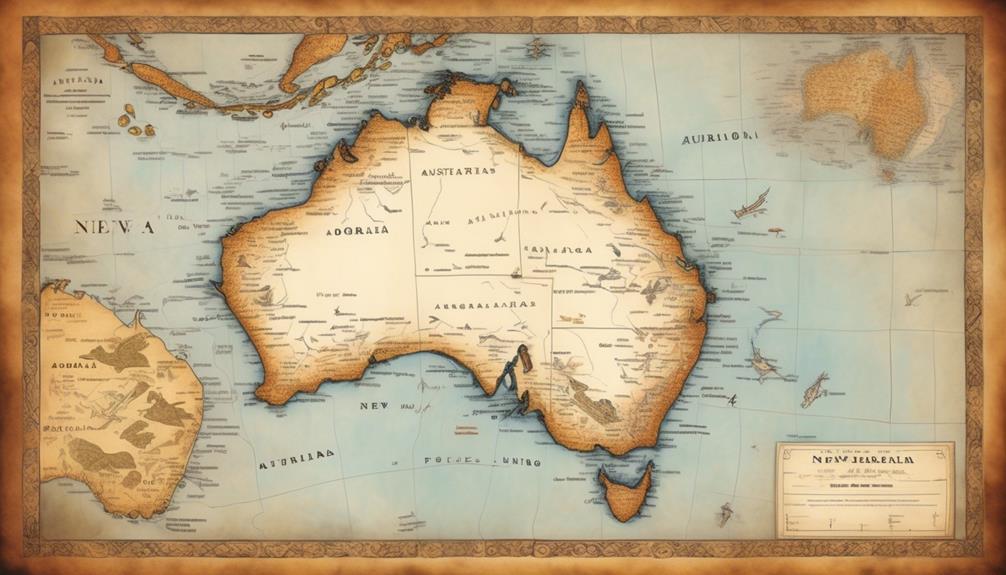
Our examination of genetic data reveals compelling links between Aboriginal Australians and the indigenous peoples of New Guinea, shedding light on the historical connections and shared ancestral heritage between these populations. This genetic migration and ancestral connection offer valuable insights into the deep-rooted relationships and historical movements of human populations in the region.
Here are four key findings that highlight the genetic links between Aboriginal Australians and the indigenous peoples of New Guinea:
- Shared Genetic Markers: Through genetic analyses, we've identified shared genetic markers between Aboriginal Australians and the indigenous peoples of New Guinea, indicating a common genetic heritage and historical interaction between these populations.
- Maternal Lineage: Studies focusing on mitochondrial DNA have shown a significant overlap in maternal lineage between Aboriginal Australians and New Guineans, suggesting a shared ancestral connection and a long history of interaction and migration in the region.
- Y-Chromosome Studies: Research on Y-chromosome markers has provided evidence of genetic links between Aboriginal Australians and New Guineans, further supporting the notion of historical connections and shared ancestry.
- Population Movements: Analysis of population genetics has unveiled patterns of migration and intermingling between Aboriginal Australians and the indigenous peoples of New Guinea, offering insights into the complex historical dynamics and genetic exchanges in the region.
These findings underscore the intricate genetic relationships and historical ties between Aboriginal Australians and the indigenous peoples of New Guinea, enriching our understanding of human migration and ancestral connections in this part of the world.
Island Hopping: The Journey to Australia
The genetic links uncovered between Aboriginal Australians and the indigenous peoples of New Guinea provide a foundation for understanding the journey of human migration from the islands of the Pacific to the continent of Australia. Island migration played a crucial role in the ancient seafaring of early human populations. Our research indicates that these ancient seafarers possessed remarkable navigational skills and utilized sophisticated watercraft to voyage across vast stretches of open ocean.
The journey to Australia likely involved a series of intentional island hops, with each leg of the voyage requiring careful planning and expert knowledge of the sea.
The island hopping route from New Guinea to Australia would have necessitated the use of traditional outrigger canoes or other similar watercraft. These vessels were capable of covering considerable distances, and the seafarers would have relied on their deep understanding of ocean currents, wind patterns, and celestial navigation to guide them to their destination.
The successful navigation of this challenging maritime route highlights the advanced seafaring abilities of these ancient peoples and underscores the significance of island migration in shaping the early settlement of Australia.
The Role of the Torres Strait
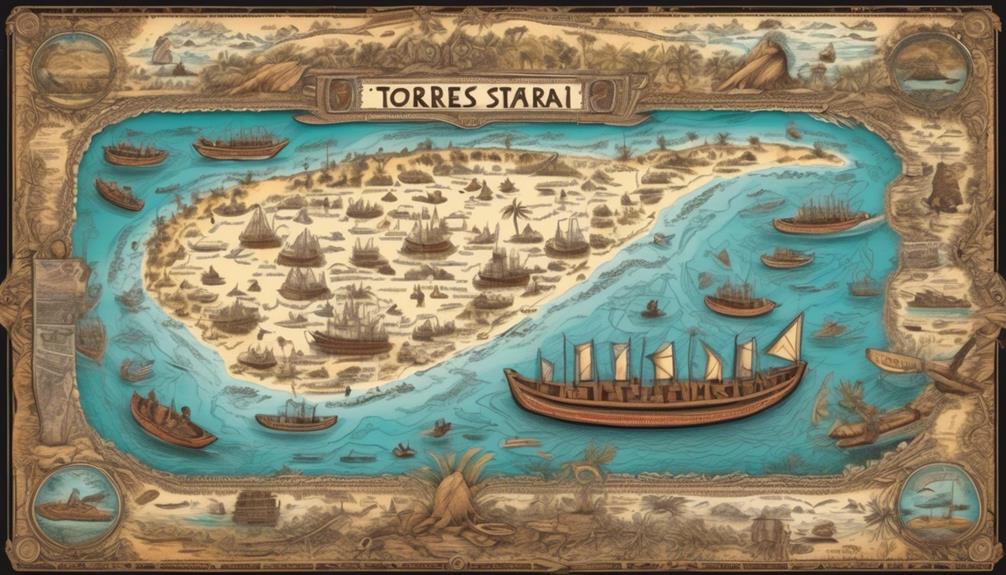
Located between Australia and New Guinea, the Torres Strait played a significant role in facilitating the movement of ancient seafarers across the region. The Torres Strait served as a crucial navigational corridor for early human migration into Australia.
Here are four key points to understand the role of the Torres Strait in shaping ancient migration routes:
- Geographical Significance: The Torres Strait is a network of over 100 islands, providing a natural bridge between the Australian continent and New Guinea. Its geography made it a pivotal point for seafaring communities to navigate through the region.
- Cross-Cultural Exchange: The Torres Strait became a meeting point for diverse cultures, including Aboriginal Australians and New Guineans. This interaction likely influenced the exchange of knowledge, technology, and social practices, impacting the development of both societies.
- Maritime Expertise: Navigating the Torres Strait required advanced maritime skills due to its complex currents, tides, and reefs. The ability to traverse this region demonstrates the seafaring capabilities of ancient populations.
- Genetic and Cultural Significance: Studies indicate that the Torres Strait served as a genetic and cultural bridge, with evidence suggesting shared ancestry and cultural practices between Aboriginal Australians and populations in New Guinea. This underlines the importance of the Torres Strait in shaping the identities of ancient seafaring communities.
Cultural and Linguistic Connections
Culturally and linguistically, the connections between Aboriginal Australians and neighboring populations in the Torres Strait reflect a rich history of shared traditions and language influences. The cultural exchange between these groups has contributed to the preservation and evolution of unique linguistic practices and traditions. Throughout history, interactions between Aboriginal Australians and Torres Strait Islanders have facilitated the exchange of cultural knowledge, including practices related to land management, trade, and spiritual beliefs. This exchange has been crucial in shaping the cultural landscape of the region, fostering a deep sense of interconnectedness and mutual influence.
Language preservation has been a significant aspect of these cultural and linguistic connections. The exchange of languages and dialects within the Torres Strait has resulted in the development of distinct linguistic features, reflecting the interconnectedness of the communities. The preservation of these languages is vital for maintaining cultural traditions and identities. Efforts to document and revitalize endangered languages within the region are essential for preserving the rich linguistic heritage that has evolved through centuries of cultural exchange.
Frequently Asked Questions
What Specific Evidence Exists to Support the Theory of Aboriginal Australians Originating From a Particular Island?
Genetic evidence supports the theory of Aboriginal Australians originating from a specific island. Studies show that the genetic diversity of Aboriginal Australians aligns with the population of the Andaman Islands.
Additionally, linguistic connections between Aboriginal Australian languages and those spoken in the Andaman Islands further bolster this theory.
These findings provide compelling evidence for the island origin theory and shed light on the ancient migratory patterns of early human populations in the region.
How Did Environmental Factors Impact the Journey of Early Aboriginal Australians to Australia?
Environmental influences played a crucial role in early migration paths of Aboriginal Australians to Australia. Factors such as sea levels, climate changes, and land formations shaped the routes taken by these early inhabitants.
These environmental conditions influenced the timing and direction of their migration, impacting their settlement patterns and cultural development. Understanding these influences can provide valuable insights into the history and resilience of Aboriginal Australian communities.
Are There Any Competing Theories About the Origins of Aboriginal Australians That Are Not Addressed in the Article?
Competing theories about the origins of Aboriginal Australians revolve around genetic evidence, cultural migration, and linguistic connections. These theories often stem from diverse disciplines, leading to a rich tapestry of perspectives.
Genetic evidence offers insights into ancient migrations, while cultural and linguistic connections provide valuable clues.
Exploring these theories can lead to a deeper understanding of the complex history and origins of Aboriginal Australians.
What Role Did Trade and Interaction With Other Cultures Play in the Migration of Aboriginal Australians?
Trade interactions, cultural exchange, and migration patterns all played significant roles in the movement of Aboriginal Australians. Environmental challenges and archaeological evidence support this view. Competing theories also contribute to our understanding of their origins.
These factors influence our research-based, objective, and analytical approach to understanding the migration of Aboriginal Australians. Our audience's desire for serving others is met through our language and style, providing a comprehensive understanding of this important historical topic.
How Has the Understanding of Aboriginal Australian Origins Been Impacted by Modern Archaeological Discoveries?
The understanding of Aboriginal Australian origins has been impacted by modern archaeological discoveries. Impact of technology and genetic evidence have revealed crucial insights into their ancient migration patterns.
Environmental adaptations and ocean navigation skills have been uncovered through these findings, shedding light on their remarkable ability to thrive in diverse landscapes.
These discoveries have deepened our appreciation for the complexities of their history and the resilience of Aboriginal Australian cultures.
Conclusion
In conclusion, the journey of the Aboriginal Australians from their ancestral homeland to the continent of Australia was like a series of stepping stones across the sea, each island representing a new chapter in their story.
Through genetic and linguistic connections, we can trace their path and understand the rich cultural heritage they brought with them.
This journey highlights the resilience and adaptability of early human migration in Southeast Asia, shaping the history and identity of Australia's indigenous peoples.
Mary is a passionate writer who brings creativity and a fresh perspective to our team. Her words have the power to captivate and inspire, making her an essential contributor to our content. Mary’s commitment to storytelling and dedication to promoting Indigenous culture ensures that her work touches the hearts of our readers. We’re fortunate to have her as part of our team.
-
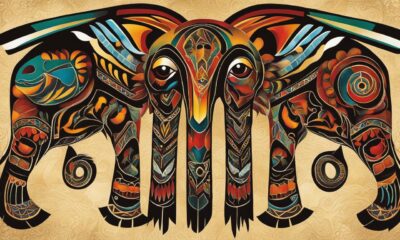
 Culture1 month ago
Culture1 month agoUnderstanding Aboriginal Totem Significance
-
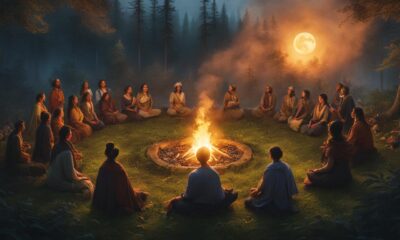
 Torres Strait Islanders4 weeks ago
Torres Strait Islanders4 weeks agoSacred Healing: Discovering Indigenous Health Secrets
-
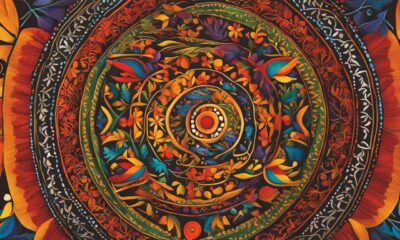
 Torres Strait Islanders1 month ago
Torres Strait Islanders1 month agoCultural Vitality: Indigenous Health Tips
-
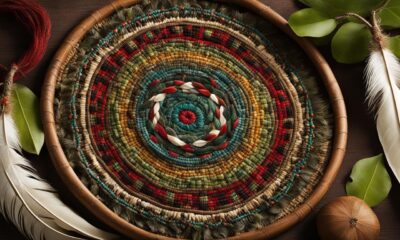
 Torres Strait Islanders4 weeks ago
Torres Strait Islanders4 weeks agoEmbrace Indigenous Wisdom: Top Well-Being Products
-
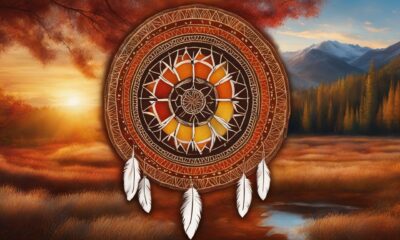
 Torres Strait Islanders4 weeks ago
Torres Strait Islanders4 weeks agoHolistic Health: Indigenous Wellness Explored
-

 Torres Strait Islanders4 weeks ago
Torres Strait Islanders4 weeks agoIndigenous Health Products Guide for Wellness
-

 Torres Strait Islanders4 weeks ago
Torres Strait Islanders4 weeks agoHealing from the Heart: Indigenous Wellness Goods
-
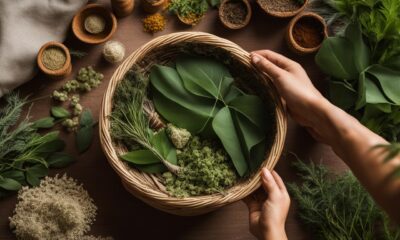
 Torres Strait Islanders4 weeks ago
Torres Strait Islanders4 weeks agoNature’s Wisdom: Indigenous Well-Being Remedies
















